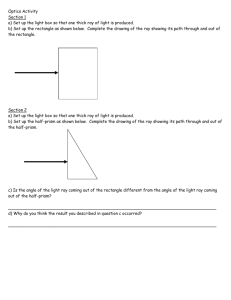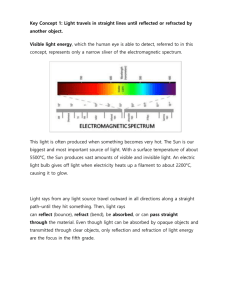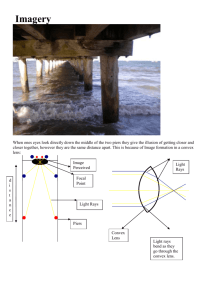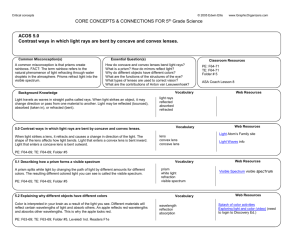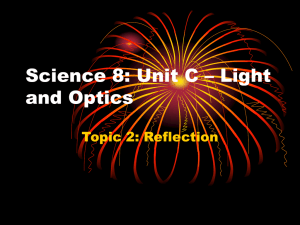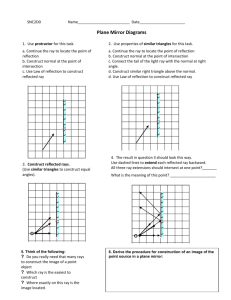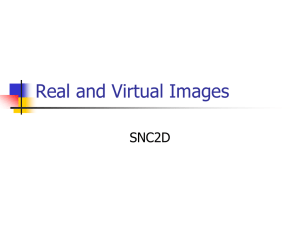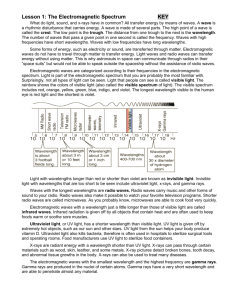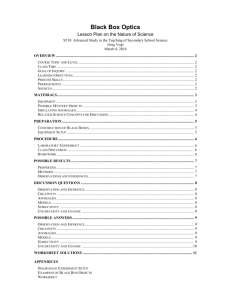Optics Activity
advertisement
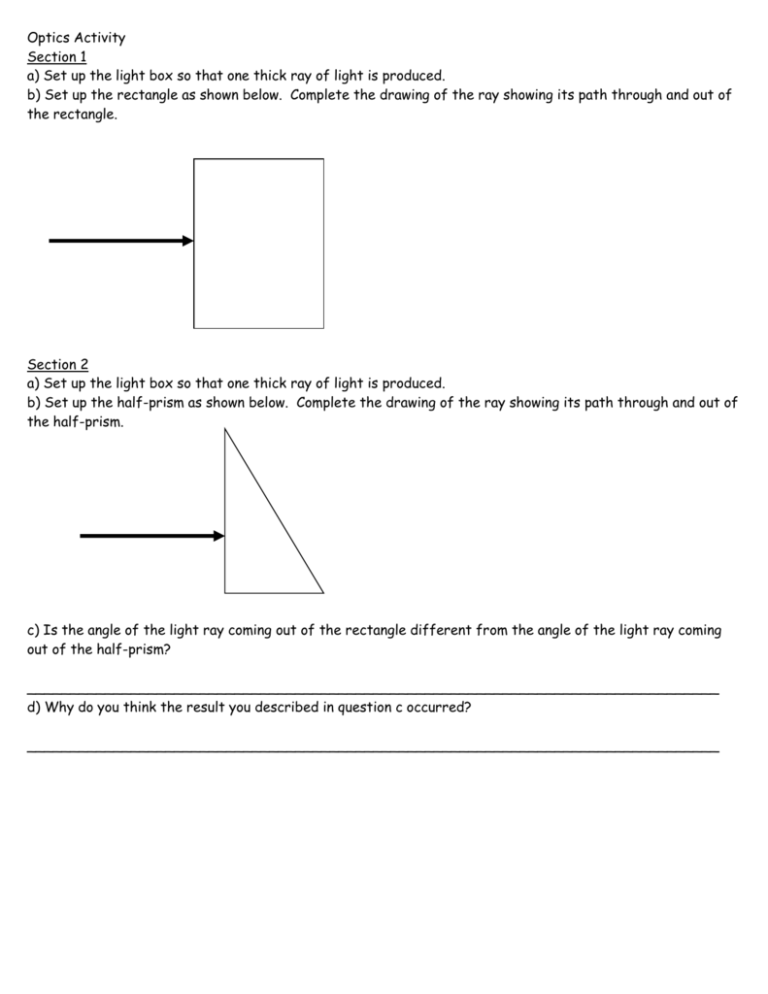
Optics Activity Section 1 a) Set up the light box so that one thick ray of light is produced. b) Set up the rectangle as shown below. Complete the drawing of the ray showing its path through and out of the rectangle. Section 2 a) Set up the light box so that one thick ray of light is produced. b) Set up the half-prism as shown below. Complete the drawing of the ray showing its path through and out of the half-prism. c) Is the angle of the light ray coming out of the rectangle different from the angle of the light ray coming out of the half-prism? ________________________________________________________________________________ d) Why do you think the result you described in question c occurred? ________________________________________________________________________________ Section 3 a) Set up the light box so that one thick ray of light is produced. b) Set up the prism as shown below. Complete the drawing of the ray showing its path through and out of the prism. If you have the prism set up correctly you should see a rainbow. c) Are all wavelengths of visible light refracted equally by the prism? Explain your answer. ___________________________________________________________________________ ___________________________________________________________________________ Section 4 a) Set up the light box so that two parallel rays of light are produced. b) Set up the concave lens as shown below. Complete the drawing of the ray showing their path through and out of the lens. Section 5 a) Set up the light box so that two parallel rays of light are produced. b) Set up the convex lens as shown below. Complete the drawing of the rays showing their path through and out of the lens. Section 6 a) Complete the following diagrams b) Which lens (concave or convex) works like two prisms stacked base to base? _____________________ c) Which lens (concave or convex) works like two prisms stacked point to point? ____________________ Section 7 a) Set up the light box so that three parallel rays of light are produced. b) Set up the plane mirror as shown below (at a 900 angle to the light box) c) Complete the ray drawing of the rays showing the path of the rays reflected off the mirror. d) Set up the light box so that three parallel rays of light are produced. e) Set up the plane mirror as shown below (at about a 45 0 angle to the light box) f) Complete the ray drawing of the rays showing the path of the rays reflected off the mirror. g) Why can you predict the path that rays will take when reflecting off a mirror? ___________________________________________________________________________ Section 8 a) Set up the light box so that two parallel rays of light are produced. b) Set up the concave mirror as shown below. Complete the drawing of the rays showing their reflected path. Section 9 a) Set up the light box so that two parallel rays of light are produced. b) Set up the convex mirror as shown below. Complete the drawing of the rays showing their reflected path. Section 10- Look at the images formed with the different lenses and mirrors. Complete the following chart using the choices provided below for each column. Optic Effect on light rays Image formed Choices for chart: Causes rays to converge Causes rays to spread out Magnifies image Makes image smaller Causes image to flip Concave lens Convex lens Concave mirror Convex mirror Section 10 a) Why do you think concave mirrors and convex lenses have similar effects on an image? __________________________________________________________________________________ b) Why do you think convex mirrors and concave lenses have similar effects on an image? __________________________________________________________________________________

